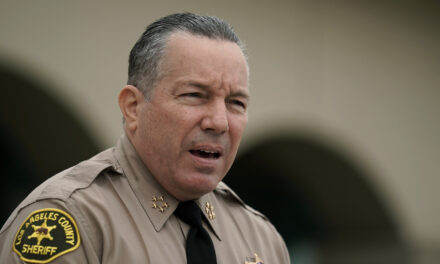
Opinion | The F.D.A.’s Johnson & Johnson Vaccine Call Is No Catastrophe
When data linked a potentially fatal blood clotting disorder to Johnson & Johnson’s coronavirus vaccine, the Food and Drug Administration and the Centers for Disease Control and Prevention did what they have promised to do, and what they nearly always do, in such situations: They advised doctors and pharmacists to temporarily halt use of the vaccine while they investigate the matter.
The pause is expected to last just a few days. The risk of developing this potential side effect is expected to be very small relative to the risks associated with the coronavirus for unvaccinated people. Only six clotting cases have been reported in the United States so far, out of the 6.5 million Johnson & Johnson vaccinations that have been administered. It’s not even clear yet if the condition resulted from the shot. The F.D.A. is expected to clear the company’s vaccine for continued use, possibly with some exceptions for people who have a high risk of clotting and nearly certainly with some guidance on how to watch for and treat the condition in question.
The fact that such pauses are commonplace in clinical trials, and in post-marketing drug surveillance, did not stop critics from dragging the F.D.A. and the C.D.C. In the hours after the announcement on Tuesday morning, critics warned that the agencies’ decision would cost lives, increase vaccine hesitancy and sow widespread irreconcilable confusion.
That fear and frustration is understandable. This is a precarious moment in a pandemic that has been both deadly — with nearly three million lives lost around the world — and interminable. Vaccination rates have been increasing steadily, but variants are still on the march. The Johnson & Johnson shot makes up a small portion of the United States’ total vaccine supply — less than 5 percent, according to the White House. But it has a crucial role to play. Because it requires just one dose, not two, it’s been the preferred option for harder to reach communities and for places where vaccine hesitancy is rampant. (It’s easier to persuade a person once than twice.) Those are often the same communities where the risk of developing Covid-19 is greatest. It’s no small matter to undermine trust — in this shot, especially.
But if federal health officials were to skip this step — if they were to decide not to flag the blood clot development — that would also come with risks. In the United States, as elsewhere, vaccination is predicated on careful monitoring and quick course corrections in the event of an emergency. This is especially true for vaccines against the coronavirus, given how quickly they were authorized. Changing the normal protocol could just as easily undermine trust, increase hesitancy and give the virus yet another edge over us as not doing so.
That said, it’s fair to consider whether officials had other options. It might have made more sense to proceed with an investigation, while continuing to vaccinate — or to at least not cancel existing vaccine appointments, and then to adapt as needed if something more worrisome turned up.
It’s hard to say if taking this half-measure would have done a better job of mitigating fears and preserving trust. On one hand, many vaccine-hesitant people might assume that if the problem were truly bad, the vaccine would be discontinued. On the other hand, people who are already primed to panic over the safety of vaccines may be less likely to draw a distinction between pausing and not pausing a vaccination program.
The Johnson & Johnson vaccine will nearly certainly remain a crucial weapon in a battle that all Americans are desperate to bring to a close. The best thing proponents of the vaccine can do is remember that, and remind everyone else of it in the days ahead.
















